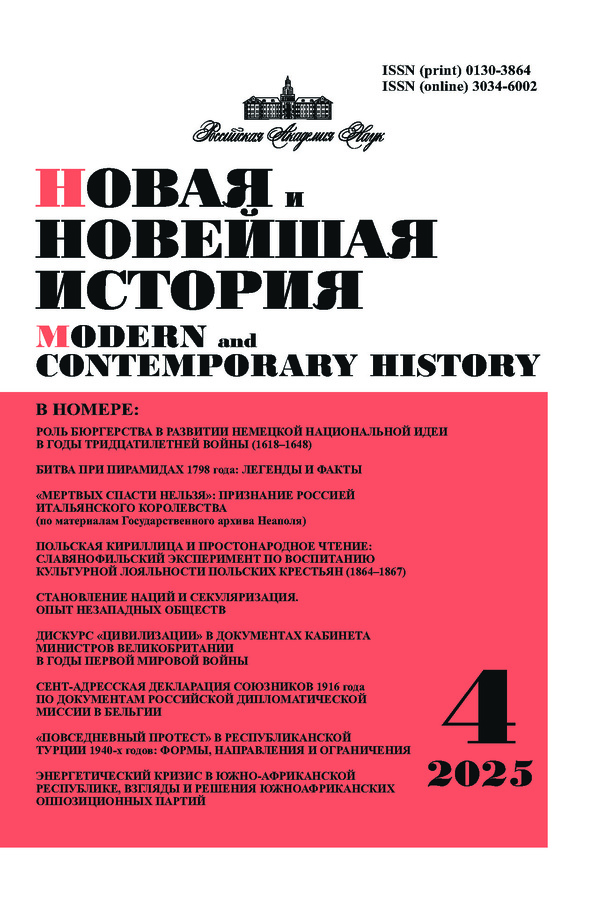The Soviet Diplomatic Catastrophe in Beijing on April 6, 1927
- 作者: Shubin A.V.1
-
隶属关系:
- Institute of World History, Russian Academy of Sciences
- 期: 编号 4 (2025)
- 页面: 146-157
- 栏目: 20th century
- URL: https://rjpbr.com/0130-3864/article/view/691865
- DOI: https://doi.org/10.31857/S0130386425040105
- ID: 691865
如何引用文章
详细
This article examines the events of 6 April 1927 in Beijing, when Chinese security forces raided premises associated with the Soviet diplomatic mission, conducting arrests and seizures. In Soviet historiography, this episode was long portrayed as a flagrant breach of international law and a manifestation of an imperialist conspiracy against the USSR. This interpretation – framing the incident as an “attack on the embassy” – has persisted in much of Russian historical writing. However, the operation was carried out under the authority of the Beijing government, led by Wellington Koo and Zhang Zuolin, on premises that, contrary to Soviet assumptions, did not enjoy diplomatic extraterritoriality. The Soviet diplomats’ lack of awareness regarding the legal status of these properties resulted in serious consequences: key Soviet military and intelligence personnel, as well as Chinese Communists, were exposed to a coordinated strike by the Chinese authorities. The search uncovered extensive documentary evidence of Soviet subversive activities in China, including the operations of the Comintern and the Chinese Communist Party (CCP), support for Kuomintang General Feng Yuxiang – then in opposition to the Beijing regime – funding of anti-government activities, and covert intelligence work by Soviet advisers. Among the most significant revelations was the direct involvement of CCP leader Li Dazhao in armed resistance, leading to his execution alongside several associates. The fallout from the raid significantly weakened Soviet and Communist influence in northern China. While the episode has often been labelled an attack on a diplomatic mission, it is more accurately described as the seizure of Soviet and Communist institutions operating without diplomatic immunity.
作者简介
A. Shubin
Institute of World History, Russian Academy of Sciences
Email: historian905@gmail.com
Moscow, Russia
参考
- Айрапетов О.Р. Внешняя политика Советской России и СССР в 1920–1939 годах и истоки Второй мировой войны. М., 2020.
- Алексеев М.Н. Советская военная разведка в Китае и хроника «китайской смуты» (1922–1929). М., 2010.
- ВКП(б), Коминтерн и национально-освободительное движение в Китае. Документы. Т. 2. Ч. 2. М., 1996.
- Документы внешней политики СССР. Т. 10. 1 января–31 декабря 1927 г. М., 1965.
- Долг и отвага. Воспоминания о дипкурьерах. М., 1988.
- История дипломатии. Т. 3. М.; Л., 1945.
- Мамаева Н.Л. Коминтерн и Гоминьдан. 1919–1929. М., 1999.
- Новейшая история Китая. 1917–1927. М., 1983.
- Сергеев Е.Ю. Обманчивый рассвет. Советский Союз и Великобритания в 1925–1932 гг. М., 2024.
- Шубин А.В. Вожди и заговорщики. Политическая борьба в СССР в 20–30-х годах. М., 2004.
- Clements J. Makers of the Modern World: Wellington Koo. London, 2008.
- Craft S. G. Wellington Koo and the Emergence of Modern China. Lexington, 2014.
补充文件









